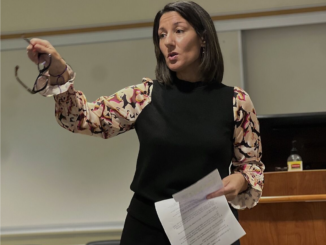
Mathew Desmond
Staff Writer
We care about sustainability because it helps make the world livable. We recognize that humans have a huge role in that. Part of that role includes protecting animals. According to the World Wildlife Foundation, animals are essential because they help prevent climate change. For example, herbivores eat grass that can fuel wildfires. Animals are also important as they provide food for many organisms. Carnivores and omnivores rely on animals to live. Animals aid in the growth of plants by replenishing the nutrients in soil. Animals are essential to sustainability.
Not only do animals help the environment, but they can also benefit people’s mental health. Studies have found that animals can make people happier and reduce stress. Even though these animals might not be personal pets, there are many good ways to interact with them. For example, people can go birdwatching which can improve concentration and alertness. If people practice focusing on a specific bird, they can also train their brains to focus on other specific aspects in their life, such as conversations or work.
Even though animals play an important role in sustainability and in helping mental health, many are at risk of extinction. Many animals could lose their habitats. Deforestation, the mass cutting down of trees in an area, can put animals such as birds, bats, and koala bears at risk. Not only can animals who live on land be harmed, animals who live in water can also be put at risk. Water pollution can put fish, turtles, and other animals in danger. Ocean pollution is especially harmful because, according to the United States Environmental Protection Agency, animals can get stuck in garbage and drown or get sick by eating debris. The loss of animals has a domino effect. Animals such as bears, wolves, and sea birds who rely on these animals as a food source face starvation.
The challenge is to understand that protecting animals is good for the long-term health of the planet. It may seem ridiculous to consider the survival of a moth or bird species when planning a road or a dam. The loss of those species, however, can have disastrous effects on the environment, the food chain, and to the livability of an area.
There are many ways to protect wildlife. One of the easiest ways is to keep trash out of their environment. Plastic waste can choke them and plastics, when broken down, can be ingested. We can also create environments to help them. This can take the form of building birdhouses or planting native plants that provide food. Another step is to reduce the use of pesticides, fertilizers, and herbicides. These chemicals end up in the water and food supply. Homeowners have complete control over how much of these chemicals they use. Consumers can support companies that do not use these chemicals and not support those who that use them irresponsibly. We can also drive less. Driving releases carbon dioxide into the atmosphere, which can harm animals. Whenever possible, we should try to walk, take public transportation, or ride a bike. We can also clean trash from bodies of water including rivers, lakes, and oceans.
Sustainability is about our connection to our environment. We should incorporate actions that protect animals into our everyday lives. If animals thrive, the delicate balance of nature can be preserved. We should all rethink the choices we make. It might be convenient to throw away a plastic bag. We might feel pressure to keep our lawns green and weed-free, but the harm that we are doing to the animals around us might make our own environment unlivable.



